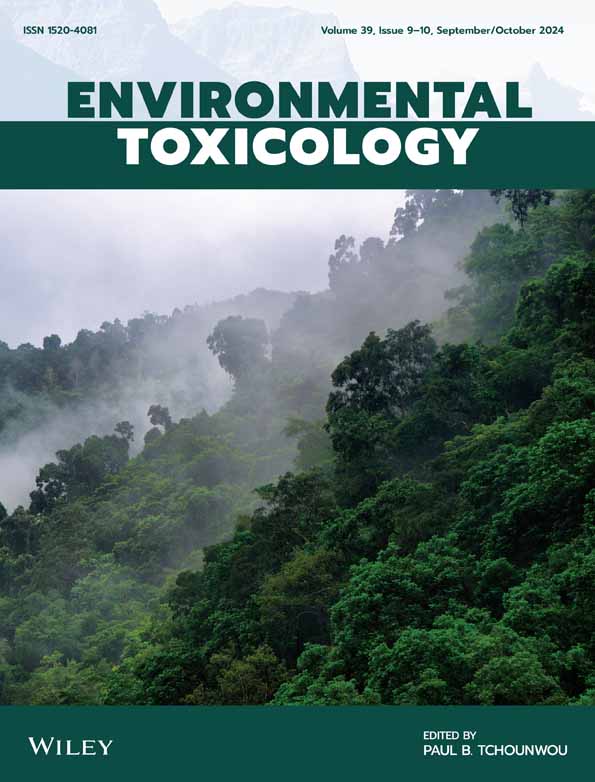揭示731种免疫细胞表型与哮喘风险之间的因果关系:双向孟德尔随机化分析
IF 3.2
3区 医学
Q2 ENVIRONMENTAL SCIENCES
引用次数: 0
摘要
越来越多的证据表明,各种免疫细胞表型与哮喘的发展之间存在关联。然而,目前还不完全清楚特定的免疫细胞表型是否会导致哮喘的风险。尽管需要进一步的研究来验证这一说法,但我们的研究更深入地解释了这种关系,并为新的治疗方法铺平了道路。我们最初的目的是揭示731种免疫细胞表型与哮喘之间的因果关系;进行双向孟德尔随机化(MR)分析。我们研究了哮喘中的731种免疫细胞表型,使用了先前发表的GWAS的摘要。通过核磁共振分析,我们解释了它们之间潜在的因果关系。我们的分析方法包括反方差加权平均、加权中位数(WM)建模和基于模式的方法。为了确保研究结果的稳健性和准确性,我们采用MR - PRESSO、Cochran’s Q检验、leave - one - out和MR - Egger方法进行了敏感性分析。此外,我们进行了反向磁共振分析,以检查潜在的反向因果关系。我们的研究揭示了43种与哮喘风险有因果关系的免疫表型。Bonferroni调整和敏感性分析后,我们发现四个immunophenotypes强有力的因果联系和可靠性,他们是:HLA DR在直流(95%置信区间:1.0008—-1.0014,p = 4.26×10−6,罗斯福= 2.21×10−8),CD8在CD28−CD8br(95%置信区间:1.0007—-1.0020,p = 4.01×10−5,罗斯福= 5.70×10−4)、CD62L在单核细胞(95%置信区间:0.9985—-0.9995,p = 1.06×10−4,罗斯福= 9.20×10−4),CD8br %白细胞(95%置信区间:1.0006—-1.0019,p = 1.07×10−4,罗斯福= 1.14×10−3)。我们已经证实了所有这些免疫表型的大量共同遗传,这表明哮喘的发展有贡献。此外,反向MR证实哮喘和免疫细胞表型之间缺乏因果关系。我们的研究提供了不同免疫表型对哮喘有益或有害的证据。鉴于哮喘是一种广泛的疾病,包含复杂的免疫机制,这项研究可能会提供改善的结果和长期的哮喘治疗策略。本文章由计算机程序翻译,如有差异,请以英文原文为准。
Unraveling the Causal Relationship Between 731 Immunocyte Phenotypes and Asthma Risk: A Bidirectional Mendelian Randomization Analysis
Growing evidence suggests an association between various immune cell phenotypes and the development of asthma. However, it is still not entirely clear whether specific immune cell phenotypes might causally contribute to the risk of asthma. Despite further studies required to validate this claim, our study delves deeper into explaining this relationship and paving the way toward new therapeutic approaches. Our initial aim is to reveal the causal relationship between 731 immunocyte phenotypes and asthma; a bidirectional Mendelian randomization (MR) analysis was performed. We have investigated 731 immunocyte phenotypes in asthma, using a summary of previously published GWAS. Conducting an MR analysis, we have interpreted the potential causative relationship between them. Our analytical approaches included inverse variance‐weighted average, weighted median (WM) modeling, and pattern‐based approaches. To ensure the robustness and accuracy of our findings, we conducted sensitivity analyses employing MR‐PRESSO, Cochran's Q test, leave‐one‐out, and MR‐Egger approaches. Additionally, we conducted a reverse MR analysis to examine potential reverse causality. Our study revealed 43 immunophenotypes with a causal connection to asthma risk. Following Bonferroni correction and sensitivity analysis, we have identified four immunophenotypes with strong causal associations and reliability, them being: HLA DR on DC (95% CI: 1.0008–1.0014, p = 4.26 × 10−6 , FDR = 2.21 × 10−8 ), CD8 on CD28− CD8br (95% CI: 1.0007–1.0020, p = 4.01 × 10−5 ,FDR = 5.70 × 10−4 ), CD62L on monocyte (95% CI: 0.9985–0.9995,p = 1.06 × 10−4 ,FDR = 9.20 × 10−4 ), CD8br% leukocyte (95% CI: 1.0006–1.0019,p = 1.07 × 10−4 ,FDR = 1.14 × 10−3 ). We have confirmed the large co‐inheritance of all these immunophenotypes, which suggests a contribution to asthma development. In addition, reverse MR confirmed that asthma and immune cell phenotypes lack a causal association between them. Our study provides evidence of different immune phenotypes, which are either beneficial or detrimental to asthma. Given the fact that asthma is a broad disease and contains complex immune mechanisms, this research may offer improved outcomes and long‐term asthma treatment strategies.
求助全文
通过发布文献求助,成功后即可免费获取论文全文。
去求助
来源期刊

Environmental Toxicology
环境科学-毒理学
CiteScore
7.10
自引率
8.90%
发文量
261
审稿时长
4.5 months
期刊介绍:
The journal publishes in the areas of toxicity and toxicology of environmental pollutants in air, dust, sediment, soil and water, and natural toxins in the environment.Of particular interest are:
Toxic or biologically disruptive impacts of anthropogenic chemicals such as pharmaceuticals, industrial organics, agricultural chemicals, and by-products such as chlorinated compounds from water disinfection and waste incineration;
Natural toxins and their impacts;
Biotransformation and metabolism of toxigenic compounds, food chains for toxin accumulation or biodegradation;
Assays of toxicity, endocrine disruption, mutagenicity, carcinogenicity, ecosystem impact and health hazard;
Environmental and public health risk assessment, environmental guidelines, environmental policy for toxicants.
 求助内容:
求助内容: 应助结果提醒方式:
应助结果提醒方式:


